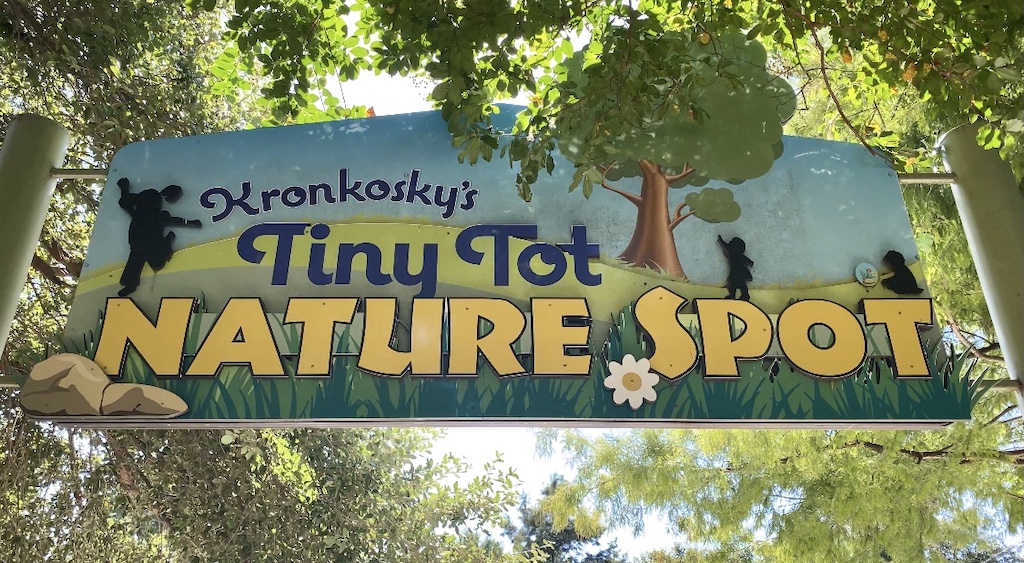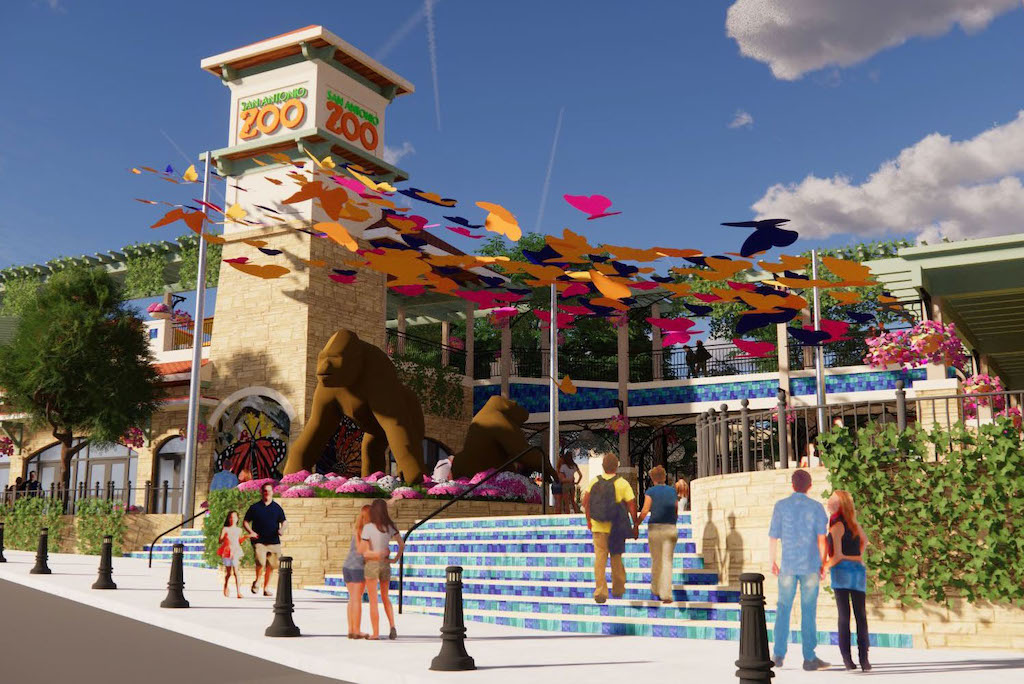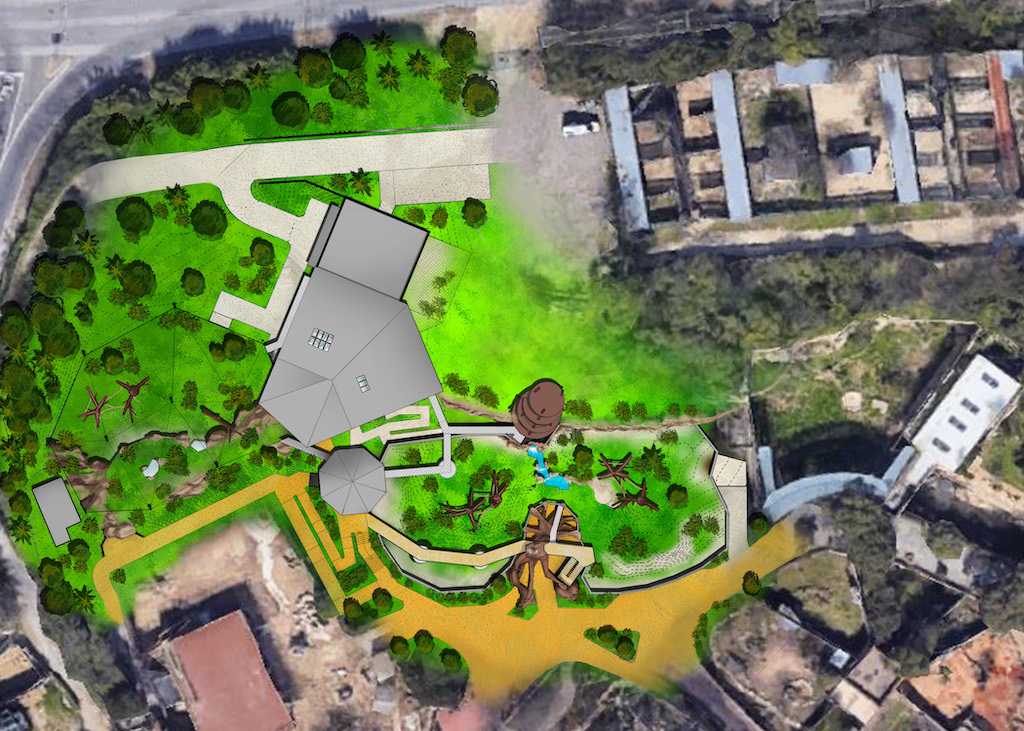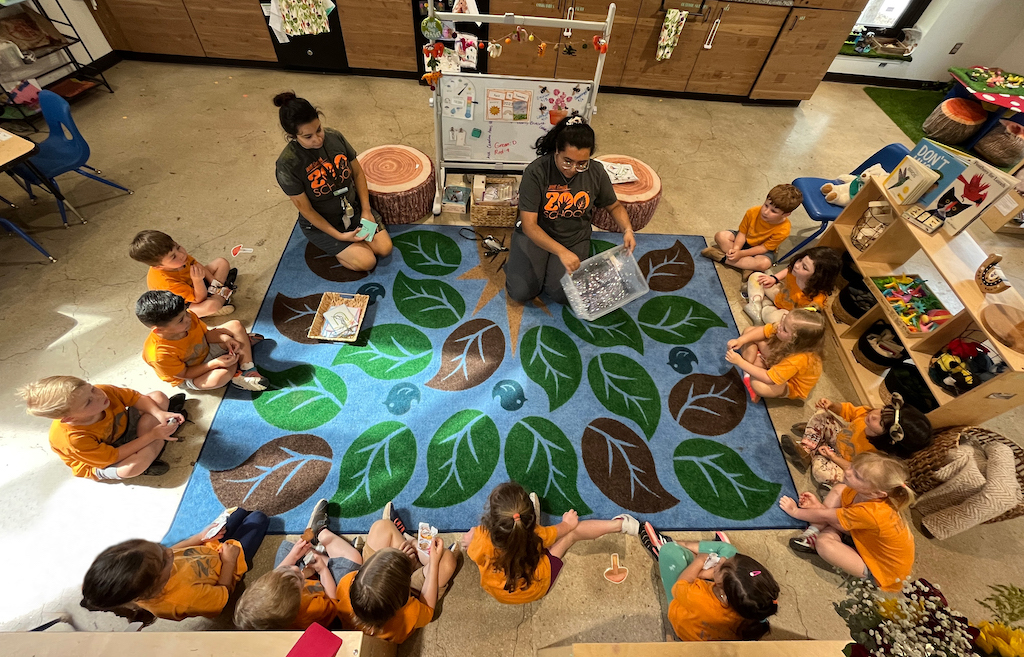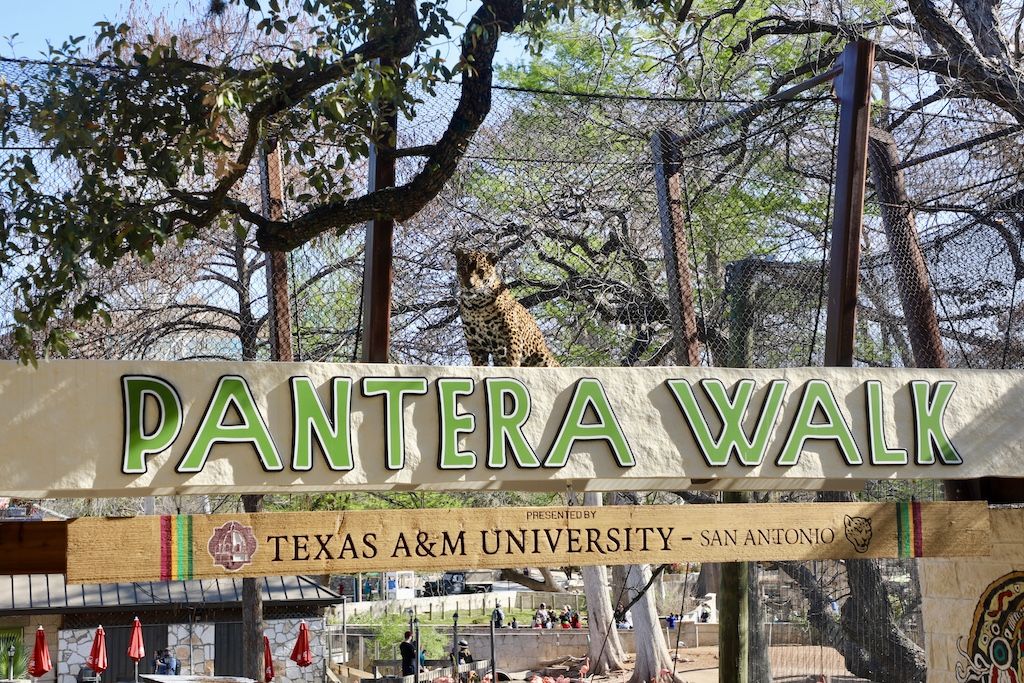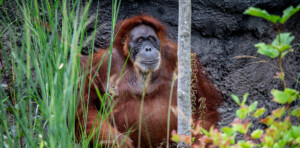Tim Morrow is president and CEO of San Antonio Zoo in Texas, US. He last spoke with blooloop in 2019, just before the onset of the COVID-19 pandemic.
Since then, a lot has happened at the zoo.
“We look at the pandemic as a foundational year for our zoo,” Morrow says. “We worked really hard, and came out of it pretty strong, opening a capital project in 2021.”
The project concerned was Neotropic, an immersive and naturalistic expansion of the jaguar habitat.
“It’s a reimagined realm with features of South and Central America,” he explains. “We put in a unique walkway system for jaguars. This allows them to go through an Amazonian aviary to connect to another space. The jaguars are walking through an aviary. Howler monkeys, birds and jaguars can all see each other. It’s very enriching and natural for the animals. And the guests love it too because they can see the jaguars at eye level.
“There is so much more space for our cats. It’s a really nice addition to the zoo. As we came out of COVID, it sent a message to our community that we’re strong, we’re back, and we’re a safe place to visit and to invest donations to keep supporting our growth.”
What’s new at San Antonio Zoo?
The following year saw a reimagining of the Kronkosky’s Tiny Tot Nature Spot. This is a 1.5-acre space for younger children, featuring Discovery PLAYce.
“It’s an area of our zoo dedicated to children from zero to five years old,” Morrow says. “It encourages them to get outside, get in nature, get dirty, and get muddy. Inside, Discovery PLAYce, which is very interactive for our play leaders, has frogs, toads, and bugs for kids to see. There is also an active beehive in the wall, nature areas, and a rock-climbing wall for kids.”
“The following Spring we opened a year-round butterfly house that has over 500 butterflies from South America, Asia and Africa. It’s also got a free-roaming sloth inside the building, which is unique.”
A further addition was a big outdoor nature play area for kids:
“It has nature-inspired play elements, and a big area for kids just to play and get muddy, to teach them how to enjoy nature.”
Sharing conversation work
Another initiative in the Neotropical Realm, the Project Selva 4-D movie theatre, integrates 3-D high-quality projection with in-seat and in-theatre FX including water mist, bubbles, snow, scent, and seat vibrations.
Morrow comments:
“Project Selva is one of our signature conservation projects in Peru and is concerned with saving the rainforest. One of the problems zoos have, in general, is messaging all the conservation work that they do on the top level.”
“People tend to think that zoos are just a place to visit and have fun and see animals. But it’s all the work happening behind the scenes that is the incredible part of what we do. Putting the theatre in that area allows us now to talk about our work in Project Selva through the pre-movie we show before the main attraction.
“We are significantly expanding the reach of our conservation efforts with that 4-D theatre. As an added bonus, in Texas, it’s air-conditioned, so people can go in there and cool off.”
The redesigned Hixon Birdhouse at San Antonio Zoo
Last summer, the zoo unveiled its redesigned historic Hixon Birdhouse, which originally opened in 1966.
“It’s a really beautiful building, architecturally,” he explains. “It’s even more beautiful on the inside than the outside. It has an open-air aviary and then enclosed area aviaries around the perimeter, but the building was very nondescript. People would literally ask us if they were allowed to go in.”
“The Hixon family is still involved on our board. Through their support, we redid the entire interior and exterior.”
The renovation involved a more colourful entrance, vibrant additions to the exterior reflecting the diverse birdlife of the region, and updated interiors. As a result, the birdhouse, home to dozens of species of birds including the Tambourine Dove, the Northern Pintail, the Andean Tinamon, the Golden-breasted Starling, and the Pekin Robin, is now one of the zoo’s most popular buildings:
“We’re very happy that people are taking advantage of that area.”
Improvements for staff
Throughout 2022, he adds, a lot of work was done for the staff:
“We try to balance improvements to the zoo front and back. Our staff is the key to everything we’re doing, so we want them to be in good workspaces.
“If we go back two years, we had staff including leaders at the director and vice-president level working in portable trailers that were put in the zoo in the 1980s. They were old, not appealing to work in, and not appealing in terms of drawing new talent to the zoo.”
Accordingly, he explains:
“We converted two buildings into two-storey office buildings, and put over 45 people in new modern offices with conference rooms and restrooms: all the things you would expect at a world-class facility to work in.
“Then there was infrastructure stuff. We didn’t have enough parking for employees. So, we addressed that, as well as general improvements all over the zoo: sidewalks, and smaller exhibits. There is a lemur exhibit, for example, which will eventually tie into our front gate with an overhead lemur walkway system where lemurs can walk over the guests.
“We are also bringing in some new species: we are introducing flying foxes this year, and have just returned meerkats to the zoo in a really great exhibit. We haven’t had meerkats since 1993.”
The meerkat habitat is located in Kronkosky’s Tiny Tot Nature Spot. Here, a family of five meerkats live in a social group referred to as a ‘mob.’ He adds:
“This is just the first phase of that exhibit; there is a full expansion in the works.”
Transforming the entrance at San Antonio Zoo
The major project in progress at the moment is a new, transformative entrance to the zoo. This went under construction at the end of 2020 and is scheduled to open in the fall of 2023. He explains:
“Our former entrance was built in the 1950s and looked like somebody’s house. It was uninspiring, and not functional for the number of people visiting.”
The City of San Antonio helped with funding for the project. Additionally, he comments:
“We have seen record donations to the zoo coming out of COVID. Returning to that being a foundational year for us, one of the things challenging us was that before the pandemic people assumed we were city-funded or operated, which we are not; we get no funding from the city to operate the zoo and have to do it all on our own.
“We are one of maybe three major zoos in the country that have this challenge. We were about to launch a marketing campaign at that point in February 2020 explaining that we are a 501(c)3 non-profit and that we need donations to help us grow. Then, of course, we had to convert the message to one asking for help to survive because of COVID.”
Donations boost
Now, almost three years on, San Antonio Zoo is seeing the biggest donations that the zoo has ever received:
“Our current campaign, Generation Zoo, is a really nice campaign that people are excited about. It will encase the entire master plan of the zoo over the next 15 years or so. The first phase, which is the new entrance, is really critical. We know we’re going to grow attendance with the things we’re doing inside the zoo. We needed a new entrance to be functional and inspiring at the same time.”
The next phases will be a two-acre gorilla habitat, which is one of the largest in the country, and an event centre.
“The gorilla habitat and event centre go together in a unique way. South Texas has a lot of rock quarries because we sit on limestone. The zoo is built inside a rock quarry, with 20-30 ft walls around the perimeter. The event centre will sit on top of a cliff wall overlooking gorillas, with a long view of the downtown skyline of San Antonio.
“The event centre will be beautiful, offering the gorillas the opportunity to come up into it. We will have a 60-foot tower from the habitat into the event centre. The gorillas will be able to climb up inside if you’re having a party to see what’s going on. It’s going to be really fun.”
PGAV Destinations, a global leader in the planning and design of unique destinations, is the design group for the front gate, gorilla habitat and event centre.
“When we announced that gorillas were going to be back we saw a great response from the community,” he says. “According to the research that we’ve seen, people expect to see certain species at great zoos. Gorillas are right at the top of the list.”
Connecting with nature
The fact that so much of the zoo’s renovation is funded by donors is a testament to how much people love the zoo, and what it means to them.
“It goes back to building trust and a relationship with our local governments, too,” Morrow says. “They know that this is a good investment for their dollars.
“There have been a lot of changes in our zoo. We have renovated probably 95% of the spaces. The community is very excited about what’s happening at the zoo right now. But I keep saying, ‘Just wait, we haven’t done anything big yet.’ Now big things are coming that will, I think, really showcase our zoo worldwide and put us on top of the list of best in the country, best in the state, best in the world.”
The zoo’s nature-based preschool now has a waiting list of over 8,000 people.
“We are looking at the next steps for that school,” he explains:
“How do we grow it around South Texas, around the country, around the world? We are realising that parents want that experience for their children to be connected back to nature, and off the iPads, the phones and the computers, really connecting. So that’s a great problem to have.
“In terms of the growth of our zoo, there is a lot going on. It is a fun time. It’s kind of our second renaissance.”
Happy 109th birthday San Antonio Zoo
San Antonio Zoo has just turned 109 years old. He comments:
“Here in the States, the WPA (Works Progress Administration) happened after the Great Depression.”
It was introduced in 1935 by then-President Roosevelt to provide jobs and income to the growing population of unemployed in the United States:
“The government put everyone to work with big projects around the country. Our zoo and the San Antonio Riverwalk were the two big projects for San Antonio. That was, effectively, our first renaissance, where we really grew and expanded and became world-class. We’re going through a second one right now, and it’s fun to be a part of this chapter.”
Growing the conservation research team
The zoo has been continuing to grow its conservation research department:
“Our vice president of conservation has just returned from the Gulf of Mexico. He was out on a ship for two weeks doing research on the very bottom of the Gulf.
“We have expanded into some other countries in South America. So we are now working in Chile, as well as in Peru, Mexico, here in the United States, and in Japan. We have been working to create Japanese fish ladders for giant salamanders in Japan. We funded all the research for that project.”
“The first ladder went in last year, and the salamanders are using it, which is very exciting. What is really interesting is we’re taking that learning and applying it elsewhere. The San Antonio River almost starts at San Antonio Zoo and flows down to the Gulf of Mexico.
“We have dams along the river here from San Antonio to the coast, including through downtown where we have the world-famous Riverwalk with restaurants and shops. It’s got a dam in it for flood control. There are species that need to come back up the river after they breed that have now been blocked in our own backyard.
“We are working with the city and with the San Antonio River Authority to get fish ladders installed here in our own backyard after doing all this work overseas. It has come full circle.”
San Antonio Zoo and the Horned Lizard
Perhaps the most famous of the zoo’s conservation projects is the Horned Lizard project.
“The Horned Lizard looks like a combination of a frog and lizard with spikes all over it,” Morrow says. “It can actually shoot blood out of its eyes.”
“People in Texas are emotionally attached to this species, which is disappearing. We take people into our labs to show them the horned lizard and the breeding programme, and then out to release. Grown men and women weep because this creature is such a part of their childhood.
“We’re working with multiple other zoos across Texas on this conservation initiative. We have just doubled the size of the production capability of those labs, 100% through donations again, to put more lizards out on the landscape, and keep that programme growing.”
Conservation and education
The zoo’s pillars are conservation and education:
“We have put a lot of investment into both our education programmes at the zoo and our conservation programme,” he says:
“One of the beautiful things about working at a nonprofit like San Antonio Zoo is every dime we make goes right back in. Every time someone visits or donates or buys something, it all goes back to the mission. That is nice, and refreshing, especially contrasting it with the corporate environment, where someone else is getting all the profits.”
Touching on the masterplan, he says:
“We have not released a full masterplan. But there are a lot of species that our zoo does not possess that we would like to have and that our visitors expect. Gorillas were one of them: we hadn’t had gorillas at San Antonio Zoo since 1991. That goes back to a time when, from the early 1900s through until probably the 1980s, zoos tended to have one of everything, and were judged by the scope of their menagerie collection.
“Around the 1980s, zoos really started to realise the social needs of animals and also the importance of family groups. Zoos only had gorillas if they had the proper habitat to support a family or bachelor group. At that point, our zoo sent its last gorilla to the Smithsonian, I believe. We haven’t had a habitat since, until now.
“Generations of kids have grown up here that have never seen a gorilla in their life because they couldn’t afford to go to Dallas or, or Fort Worth, or to travel to Africa. We’re really excited to bring the species back.”
Signature animals
The last elephant recently moved out of San Antonio Zoo:
“We had an older habitat that was built in the forties or fifties, not at all how we would build a modern elephant habitat. Elephants will be back in the future.”
In fact:
“That will be the next signature animal: we will get to work on bringing elephants back. We don’t want generations of children to grow up without being able to see and connect with and learn about elephants in person.”
“We are hopeful that in this first phase, we are able to over-fundraise, keep that momentum going, and roll right into phase two. It is exhausting to think of because fundraising and big capital projects are a lot of work, but at the same time, it’s so rewarding.
“After all, as we say all the time in our leadership meetings, we’re only here for one small chapter of this zoo’s incredible hundred-year-plus history. So, let’s maximise our chapter, keep that momentum going, and really grow the zoo.”
Expanding San Antonio Zoo
The zoo has land on the other side of the highway for expansion:
“We’re also looking for property, like many zoos, for a safari park concept,” Morrow explains:
“The beauty of our zoo is it’s located near downtown, but we also want to look at the big picture. A safari park experience to which people could drive from our community is something we’re looking at.
“We are also exploring how we can grow our school. We have put together a committee of not just teachers, but entrepreneurs, people that do franchising, people that have built and skilled businesses to identify the next steps. One of our universities is helping us too.
“It’s a busy but very exciting time. It goes back to that momentum we gained coming out of COVID.”
San Antonio Zoo is accredited by the Association of Zoos and Aquariums and the Zoological Association of America and is also Humane Certified by American Humane.


